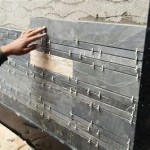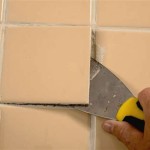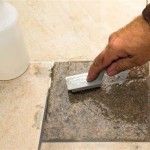Can You Install Ceramic Tile Over Concrete?
Installing ceramic tile over concrete is a common and often preferred method for flooring. Concrete provides a solid, stable base for tile, making it a durable and long-lasting flooring solution. However, there are several factors to consider before embarking on this project, including the condition of the concrete, moisture levels, and whether the tile is being installed over existing flooring.
Assessing the Concrete Subfloor
The first step in determining if you can install ceramic tile over concrete is to carefully assess the condition of the subfloor. Concrete should be structurally sound, level, and free from cracks, chips, or other imperfections. If the concrete is rough or uneven, it will need to be leveled before tile installation. This may require a self-leveling compound or other leveling techniques.
Cracks in the concrete can be a serious problem, as they can lead to tile cracking or movement. If you encounter significant cracks, it is best to consult with a professional to determine the best course of action. Minor cracks can often be filled with a crack filler or epoxy resin.
Moisture Levels and Vapor Barriers
Concrete can be susceptible to moisture, which can cause problems with tile installations. Moisture can cause tile to delaminate or crack, and it can also lead to mold and mildew growth. To prevent these issues, it is important to ensure that the concrete subfloor is dry and that a proper moisture barrier is in place.
There are several methods for testing moisture levels in concrete, including using a moisture meter or performing a plastic sheet test. If moisture levels are too high, you may need to wait for the concrete to dry completely or install a moisture barrier. A vapor barrier, usually a polyethylene sheet, is placed over the concrete to prevent moisture from migrating up into the tile installation.
Existing Flooring and Tile Thickness
If you are installing tile over existing flooring, such as carpet or linoleum, you will need to consider the thickness of the tile and the total height of the flooring. The thickness of the tile and the mortar bed used for installation will add to the overall height of the flooring. If the new flooring is too high, it may cause problems with doors, appliances, or other fixtures.
In some cases, it may be necessary to remove the existing flooring before installing the tile. This is especially true if the existing flooring is not flat or level. Removing the existing flooring will also allow you to inspect the concrete subfloor for any problems that need to be addressed before installing the tile.
Tile Preparation and Installation
Once the concrete subfloor is properly prepared, you can begin the tile installation process. This involves laying out the tiles, mixing mortar, and applying the mortar to the back of the tiles before adhering them to the subfloor. It is important to use the correct type of mortar for the type of tile being installed and to apply it according to the manufacturer's instructions.
After the tile is installed, it is necessary to grout the joints between the tiles. Grout is a mixture of cement and other materials that helps to fill the gaps between the tiles and prevent dirt and moisture from getting into the installation. Grout should be applied according to the manufacturer's instructions and allowed to dry completely before the floor can be used.
Important Considerations
When installing ceramic tile over concrete, it is important to consider the following factors:
- Type of tile: Different types of ceramic tile have different requirements for installation. For example, porcelain tile is denser and more durable than ceramic tile, and it may require a different type of mortar.
- Tile size: Larger tiles can be more challenging to install than smaller tiles. They may require a thicker mortar bed and more careful planning.
- Traffic patterns: The amount of traffic the floor will receive will influence the type of tile and installation method used. High-traffic areas may require a more durable tile and a thicker mortar bed.
- Professional help: If you are not comfortable with the installation process, it is best to consult with a professional tile installer. A professional can ensure that the tile is installed properly and that the floor will be durable and long-lasting.
Installing ceramic tile over concrete can be a challenging but rewarding project. By carefully considering all of the factors involved and following the proper installation techniques, you can create a beautiful and durable flooring solution for your home or business.

Tiling Over A Ed Concrete Slab Fine Homebuilding
:max_bytes(150000):strip_icc()/can-you-install-tile-directly-on-concrete-1822600-04-458f7bb6c78348c1835cf8054ef36553.jpg?strip=all)
How To Install Tile Over Concrete
How To Tile Onto Concrete Floors Porcelain Super

How To Lay Tile On Concrete With Pictures Wikihow
:max_bytes(150000):strip_icc()/can-you-install-tile-directly-on-concrete-1822600-01-8a89ceab1a274fb8ac81890ab7fc6b1b.jpg?strip=all)
How To Install Tile Over Concrete

How To Install Ceramic Tiles On Concrete Floor Tile Installation

Can You Install Ceramic Tile On Top Of Vinyl Flooring 2024 Today S Homeowner

How To Lay Floor Tiles On Concrete Welcome The Rubi Tools Blog

How To Install Ceramic Tiles On Concrete Floor Tile Installation

Concrete Patio Transformation 7 Steps To Diy A New Outdoor Oasis
Related Posts








